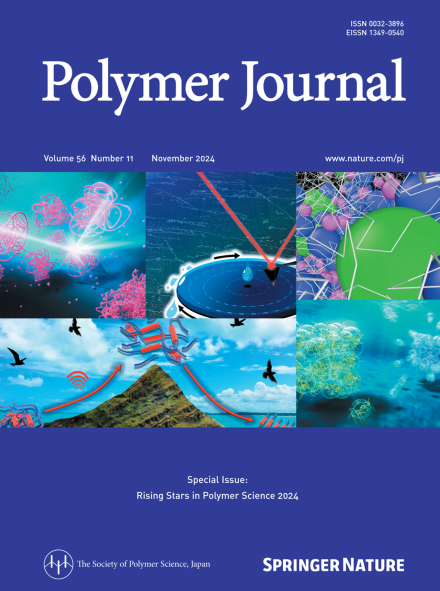网状非均质性对环氧树脂纳米力学性能的影响
IF 2.7
4区 化学
Q3 POLYMER SCIENCE
引用次数: 0
摘要
玻璃态环氧树脂网络中存在的结构异质性会严重影响环氧树脂基材料的粘合性和机械性能。最近的研究表明,在固化过程中可以监测结构异构体的大小和结构,从而为控制环氧树脂的多种物理性质提供了一种有效的方法。然而,由于异构体的尺寸被认为是纳米级的,因此要深入了解异构体的局部行为与制备条件之间的直接关联仍然具有挑战性。在这里,我们结合了最近开发的两种基于原子力显微镜(AFM)的方法--双峰振幅和频率调制以及纳米级动态力学分析(nDMA)--来直接观察和量化通过不同固化条件获得的环氧树脂的纳米级力学性能。我们的原子力显微镜图清楚地显示了固化条件与所得环氧树脂网络的异质行为之间的相关性,这与宏观测量预测的结果非常吻合。值得注意的是,我们的 nDMA 结果显示了网络异质性与环氧树脂玻璃化转变行为之间的关系。将基于原子力显微镜的 AM-FM 和 nDMA 方法相结合,证明了固化温度对环氧网络结构异质性的影响:较低的预固化温度可提供较少的异质性网络,进而控制所得环氧树脂的热性能和机械性能。本文章由计算机程序翻译,如有差异,请以英文原文为准。

Influence of network heterogeneity on the nanoscale mechanical properties of epoxy resins
The presence of structural heterogeneities in glassy epoxy networks can strongly affect the adhesiveness and mechanical properties of epoxy-based materials. Recent studies have demonstrated that the size and architecture of structural heterogeneities can be monitored during the curing process, thus providing an effective way to control multiple physical properties of epoxy resins. However, because the size of heterogeneities is believed to be at the nanoscale, obtaining insights into the direct correlation between the local behavior of heterogeneities and the preparation conditions remains challenging. Here, we combine two recently developed atomic force microscopy (AFM)-based methods, bimodal amplitude and frequency modulation and nanoscale dynamic mechanical analysis (nDMA), to directly visualize and quantify the nanoscale mechanical properties of epoxy resins obtained via different curing conditions. Our AFM maps clearly show a correlation between the curing conditions and the heterogeneous behavior of the resulting epoxy networks, which is in excellent agreement with those predicted from macroscopic measurements. Notably, our nDMA results revealed a relationship between network heterogeneity and the glass transition behavior of the epoxy resins. A combination of AFM-based AM-FM and nDMA methods evidences the effect of the curing temperature on the structural heterogeneities in epoxy networks: a lower pre-curing temperature provides a less heterogeneous network, which in turn can control the thermal and mechanical properties of resultant epoxy resins.
求助全文
通过发布文献求助,成功后即可免费获取论文全文。
去求助
来源期刊

Polymer Journal
化学-高分子科学
CiteScore
5.60
自引率
7.10%
发文量
131
审稿时长
2.5 months
期刊介绍:
Polymer Journal promotes research from all aspects of polymer science from anywhere in the world and aims to provide an integrated platform for scientific communication that assists the advancement of polymer science and related fields. The journal publishes Original Articles, Notes, Short Communications and Reviews.
Subject areas and topics of particular interest within the journal''s scope include, but are not limited to, those listed below:
Polymer synthesis and reactions
Polymer structures
Physical properties of polymers
Polymer surface and interfaces
Functional polymers
Supramolecular polymers
Self-assembled materials
Biopolymers and bio-related polymer materials
Polymer engineering.
 求助内容:
求助内容: 应助结果提醒方式:
应助结果提醒方式:


